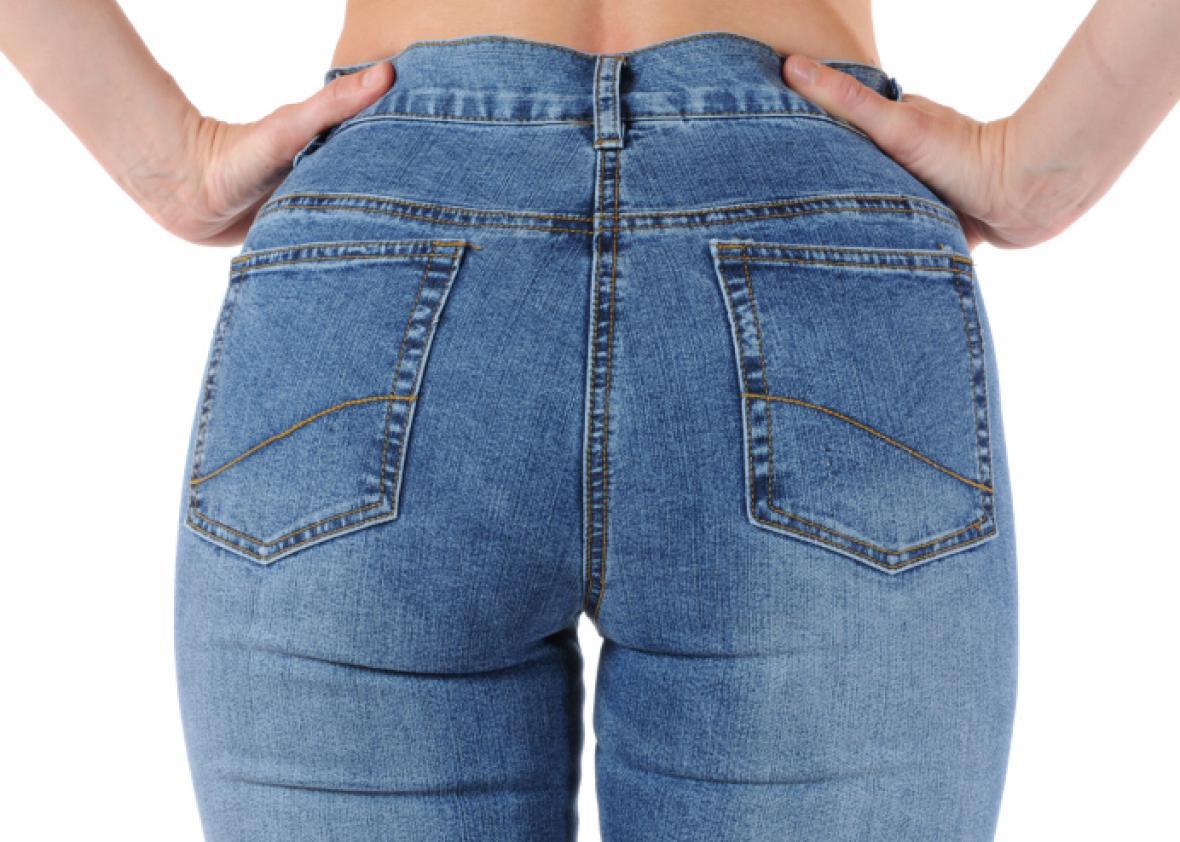Form has officially surpassed function at America’s best-loved dungaree company. For the sake of a more prominent butt, a new line of Levi’s jeans promises to keep wearers in a permanent state of the most common jean malfunction: the wedgie.
Levi’s Wedgie Fit jeans (yes, that is the actual name of the collection) are billed as “the cheekiest jeans in your closet,” because each pair “hugs your waist and hips to showcase your best assets.” I can only assume that the designers were nerds who got noogied and shoved into lockers in their elementary school days and are now reclaiming the terms of their abuse. Levi’s launched the line of pants earlier this year, and it was so popular, the company recently started selling pairs of wedgie shorts.
The Wedgie Fit collection debuted to mixed reviews. Kylie Jenner was an early/paid adopter, of course; she modeled them on Instagram and looked fabulous. Buzzfeed’s Chrissy Mahlmeister tried them on and found that “just doing a slight lunge made my entire vag light on fire.” Cosmopolitan got 10 staffers to give permanent wedgies a shot in February. Some dug the extra fabric between the cheeks—“I felt super snug, but not in a claustrophobic way”—but the feelings of the rest could be summed up by one woman’s review: “I couldn’t breathe or bend in them. Oh well!”
Time was, all jeans were Wedgie Fit. I remember shaking my head at so-called mom jeans as a child, wondering why any woman would buy pants that lodged themselves securely into her buttcrack. Levi’s boasts that its Wedgie Fits are “inspired by vintage Levi’s jeans”—but that’s a backside downside, not an asset. In the days of 100-percent cotton jeans that had no give, butts of all shapes and sizes chafed against the seams of their dungeons. But a couple of decades ago, the gods of butt comfort delivered unto us stretch denim, allowing butts to enjoy the lifting squeeze of tight fabric without the abrasion and pull of unforgiving denim. Wedgie Fit pants, which are all 100-percent cotton (with the exception of one version made with 1-percent elastane), are a throwback to the stiffer, wedgier days. It’s no wonder reviewers have found them to be more of a standing pant, made not for sitting but for arching your lower back with one knee precipitously popped, or leaning forward with the rest of the world positioned at eye level with your upper thighs.
There’s a reason why wedgies are a cherished tool in any older sibling’s torture shed. They usually fall on a spectrum that ranges from irritating to painful, and jeans don’t belong anywhere on that scale. The laws of fabric physics dictate that a wedgie usually begets a cameltoe, an even grimmer fate in terms of both comfort and aesthetics. Plus, the tightness of a pair of pants made to give their wearer a wedgie means that, if she wants to avoid pantylines, she’ll have to put herself through the double wedgie nightmare of a thong under wedgie jeans.
In his 1976 essay “Lumbar Thought,” Italian writer-philosopher Umberto Eco recalled wearing tight jeans for the first time and finding that the constant feeling of clothing pressing on his body made him aware at all times of his exterior form, limiting his capacity for internal thought and stunting his ability to manspread. “As a rule I am boisterous, I sprawl in a chair, I slump wherever I please, with no claim to elegance: My blue jeans checked these actions, made me more polite and mature,” he wrote. “I lived in the knowledge that I had jeans on, whereas normally we live forgetting that we’re wearing undershorts or trousers.” Eco concluded that tight or uncomfortable items of clothing—bras, girdles, hosiery, heels, Wedgie Fit jeans—are significant contributors to women’s oppression. Body-squishing womenswear does more than inhibit free movement, he surmised. It occupies brainspace and consciousness that could be better used scheming, creating, or just daydreaming.
Eco’s line of reasoning drifted dangerously close to the theory that women are dumber because of their clothing: “This makes us realize how intellectually gifted and heroic a girl had to be before she could become, in those clothes, Madame de Sevigne, Victoria Colonna, Madame Curie, or Rosa Luxemburg,” he wrote. But it does stand to reason that constricting garments ping at our brains as they irritate our bodies. For this reason, if any other company decides to reclaim an embarrassing wardrobe malfunction, may I suggest a pair of comfortable, adorable sneakers with a piece of toilet paper permanently attached to the heel?
